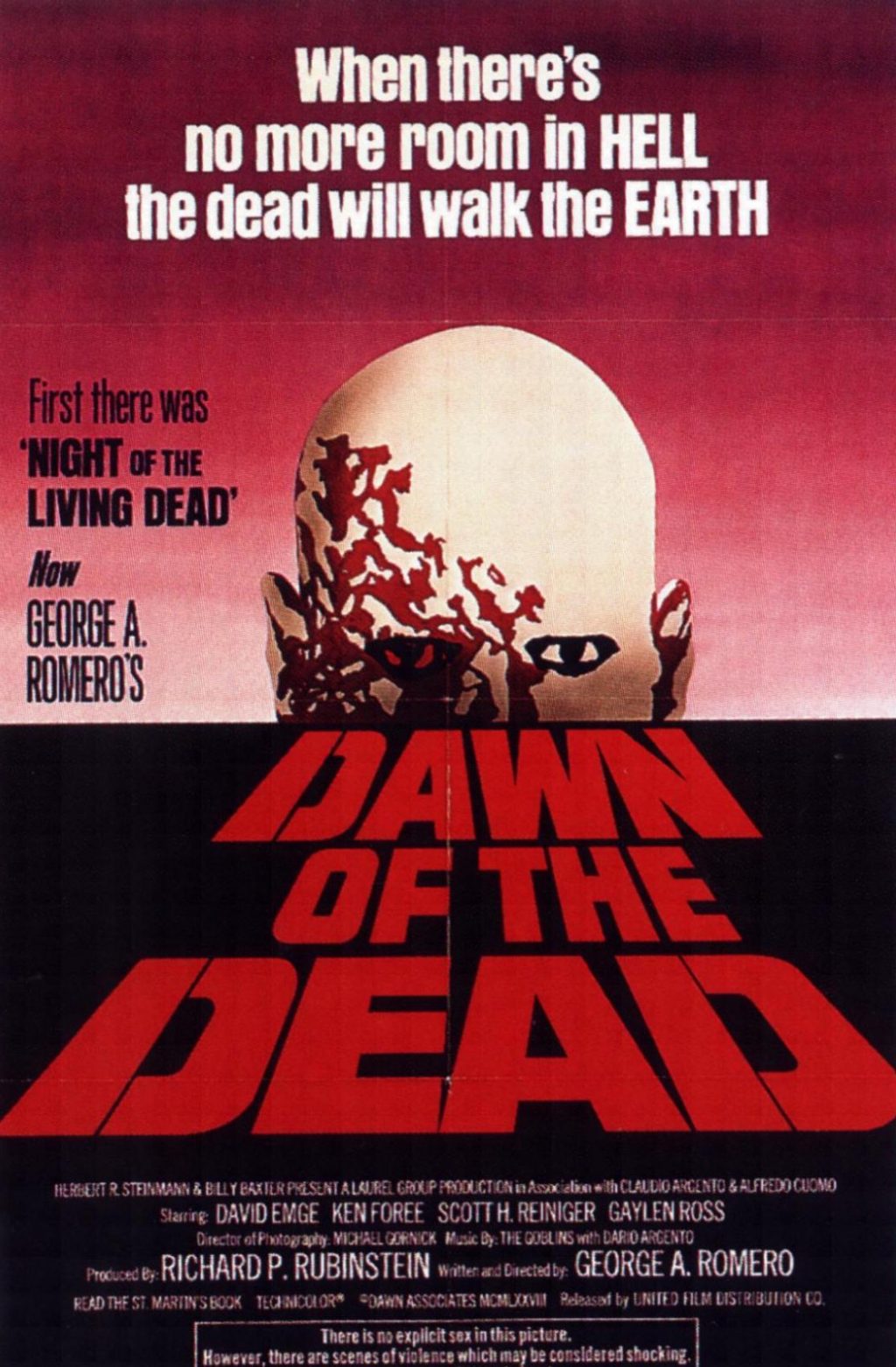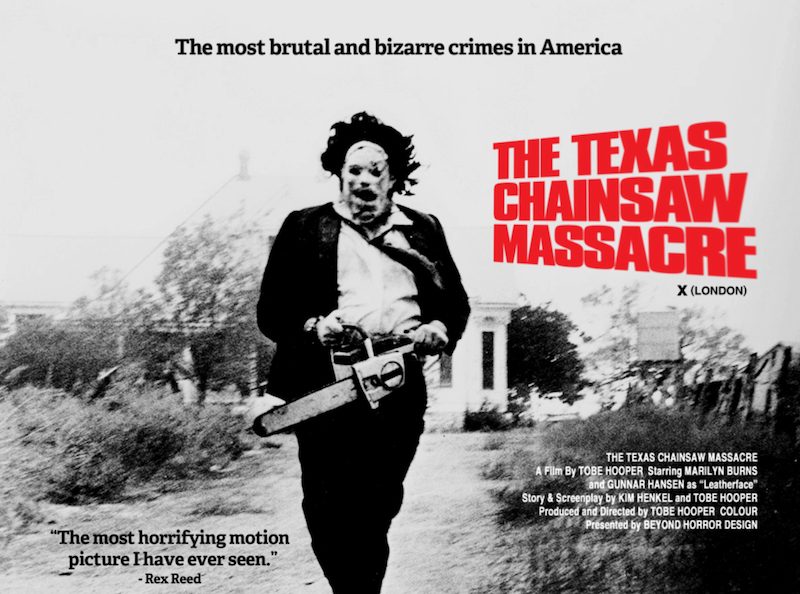What some of the Greatest Horror Movies of all time tell us about Economics

Ben Murray explores some of the obvious, and not-so-obvious connections between horror cinema and economics.
Horror. Love it or hate it, horror has been with us for pretty much as long as we’ve been making up stories. But what, if anything, does horror have to do with economics?
Well, when it comes to cinema, there's all the money these movies bring in, as well as the fact that horror often provides wannabe film-makers with a start in the industry. There's always a market for blood and gore it seems!
But beyond its popularity at the box office, some of the best and most famous horror films deal either directly, indirectly, or sometimes symbolically, with the economic reality in which we all live. Here are seven of my personal favorites.
[Please note: this article contains spoilers]
1. Dawn of the Dead

Any list of economic/horror films simply has to include George Romero’s 1978 zombie classic Dawn of the Dead, in which a group of survivors fleeing the living dead hide away in a huge shopping mall. The symbolism of hundreds of mindless zombies wandering around a mall is pretty blatant. Is that all consumer culture really is? But it goes deeper than that too. The human characters initially can’t believe their luck because they’ve everything they need on tap. But after raiding all the shops and creating a kind of domestic paradise for themselves, they soon become bored, dissatisfied, and realize just how trapped they really are, as much by the complacency of their new-found comfort as by the flesh-eating monsters outside.
2. Jaws

As well as being the film that in effect created the summer blockbuster, and the first movie that ever made $100 million, Steven Spielberg's Jaws (1975) also has economics right at the heart of its story. The shark not only threatens the lives of those in the waters around the small town of Amity, but also their livelihoods. Without the tourist trade the entire economy of the town - the shopkeepers, hotel proprietors, restaurateurs and business owners - is at risk. And so the mayor at first puts profit before safety and keeps the beaches open despite the massive killer shark swimming about. It’s only after the body count goes up, that he comes to his senses and pays gnarly old sea-dog Quint to sort it out. In real life, tourism to Martha’s Vineyard, where the movie was shot, increased massively after the film was released, and you can still take Jaws tours to this day.
3. Alien

Sticking with the Seventies, Ridley Scott’s Alien (1979), tells the story of the crew of the USCSS Nostromo, a commercial mining ship transporting vast amounts of raw ore (rocks from which valuable metals and minerals can be extracted) from a distant planet back to Earth. On the way, they stumble across a pretty terrifying creature who does what terrifying creatures do best. That is, starts killing everyone. As it turns out the creature is more valuable than the crew, and the bosses back home want this particularly nasty prize returned, whatever the cost. Once again, economic concerns override the value of human life. The name of the ship is a clue here. Nostromo is a character from a novel by Joseph Conrad who steals and hides a hoard of silver, but is gradually undone by his secret, and eventually killed while trying to recover it.
4. The Wicker Man

At first glance, Robin Hardy’s The Wicker Man (1973), the tale of a policeman who’s duped into visiting a remote Scottish island to investigate the disappearance of a young girl, might not seem to have much to do with economics. Sex-crazed, folk-singing pagans yes, but economics no. But on closer inspection we might consider the reason behind his entrapment - the failure of the island’s crops. Anyone else may have just invested in better farming equipment, or perhaps imported goods from abroad to make up the shortfall, but these being worshippers of the ‘old gods’, they require a sacrifice to ensure that future harvests will be plentiful. Not exactly rational What's this? you-icon-01, but neither is so much of what we do if you believe behavioral economists.
5. They Live

The great thing about horror is that the metaphors (economic or not) don’t need to be that subtle. John Carpenter’s 1988 classic They Live is a great example. The world is taken over by aliens, who occupy all the positions of power, then subliminally control the human population through advertising and the media. Behind every billboard and TV ad, lurk hidden commands to ‘consume’, ‘obey’ and ‘conform’ - so pretty much just like real ads then. This is a world in which people are encouraged not to question the reality about them, in order that the people in control can maintain economic and political power. Think of it as a reflection of the whole 1% vs 99% What's this? your-society thing, that many people will tell you is very real and has nothing to do with secret skeleton-faced aliens. At least, probably not.
6. Videodrome

I’m not going to try and explain the plot of David Cronenberg’s Videodrome (1983), only to say that it involves the head of a cable TV station who becomes drawn into a secret world in which images of extreme sex and violence are being used to control people’s minds. This theme of manipulation through mass media runs through the film and it taps into some much darker forces within the human psyche about what fascinates us. What stands behind the broadcasts is a shady mega-corporation called Spectacular Optical that uses the slogan ‘Keeping an eye on the world’. This strange but brilliant film shows us a vision of a world in which human beings have become slaves to the image - happy, thoughtless consumers who idolize and desire what the TV screen shows them. American Idol, anyone?
7. The Texas Chainsaw Massacre

Perhaps one of the most notorious horror films of all time, Tobe Hooper’s The Texas Chainsaw Massacre (1974) doesn’t on the surface of it have much to do with economics. Here the subject is revealed through the subtext of the picture, which was made at a time of great social, political and economic change in the US. The family at its heart are disenfranchised blue-collar workers whose livelihoods have been eroded by the mechanization of the meat industry. Human beings become their new prey, a kind of grotesque attempt to recapture their lost vocation. They barbecue and sell their product at the local gas station in order to make ends meet. Here the rules and taboos that keep society in check are horrifically transgressed by this evil inversion of the nuclear family, making the film a kind of hideous parody of US capitalism, where human beings deprived of a living and stripped of purpose literally consume themselves (well, a bunch of naive, sexually permissive, hippy teenagers anyway).
Check out the rest of Economy Explores: Horror. This post first appeared on:
Photo credit: Foter.com CC0 1.0 Universal (CC0 1.0) Public Domain Dedication



